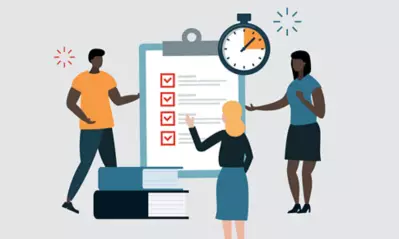
Virtual residency provides doctoral candidates a way forward during the pandemic
By University of Phoenix
Doctoral candidate Jeffery Rhymes planned to attend his second-year residency in-person at the University’s Phoenix campus in late April, just as he had for his first-year residency. Without much notice, coronavirus forced the University to close campus doors, derailing his plans.
Rhymes and other students in the April and May residency cohorts weren’t left without options. The University quickly pivoted to create a virtual residency, ensuring that coronavirus wouldn’t prevent doctoral candidates from moving along in the process of obtaining their doctoral degree.
The communication came in the form of individualized contact with students, first and foremost checking in to make sure the students and their families were okay before letting them know about the change of plans.
“The outbreak of the coronavirus turned our lives upside down,” said Rhymes, who is pursuing a Doctor of Organizational Leadership. “The team swiftly published a revised residency plan, and that resulted in a sigh of relief for my travel concerns.”
Residencies are an integral component of the UOPX doctoral degree program, with first-year residencies lasting five days, second-year residencies lasting three days, and third-year residencies lasting eight days. It was important to the College that the adjustments were made intentionally to adhere as closely as possible to the in-person experience.
“We took the in-person agendas and created a virtual synchronous option for students to engage with faculty and other students in the same way they would in person,” said Dr. Shawn Boone, associate dean of instruction in the College of Doctoral Studies.
The College in January announced an all-virtual residency program option for future doctoral candidates who may encounter difficulties travelling to a destination-based residency as part of an overall program revamp. The virtual option was in the works when the pandemic prompted a need to expedite.
When it became clear in March that the coronavirus may lead to social distancing measures that would prevent students from meeting in person, the College recognized delaying the residencies would only put students behind in their program. Leaders evaluated the best way to provide students with as close to the same experience as possible in a virtual format as they would have if they met in person.
Within a two-day timeframe, Boone created the agendas for the virtual synchronous sessions to mirror each residency day’s learning and activities. Synchronous refers to real-time interaction, as opposed to working at your own pace.
The format includes the equivalent of eight hours of meeting sessions, lectures, breakout sessions—with lunch and breaks built in throughout the day— through the use of the technology platform Blackboard® Collaborate. Collaborate is a trademark of Blackboard Inc.
“The virtual residencies complement the student’s academic curriculum, plus they will still be able to meet and connect with other students, faculty and staff,” said Dr. Hinrich Eylers, vice provost at University of Phoenix.
For now, Dr. Eylers is making determinations 30 days in advance of an upcoming residency whether the in-person modality will be changed to virtual, based on the most current recommendations and guidelines related to social distancing. May’s residencies will all be held virtually.
The genuine concern and caring for each student’s overall well-being, as well as ensuring that they don’t get knocked off their academic trajectory is something Rhymes said he and all other students in the in-person residencies will never forget.
He acknowledged that University representatives are continuing to reach out to and support students, even while they themselves are impacted by coronavirus.
“They have responsibilities to their families as well, so all they have done is much appreciated and means a lot.”


